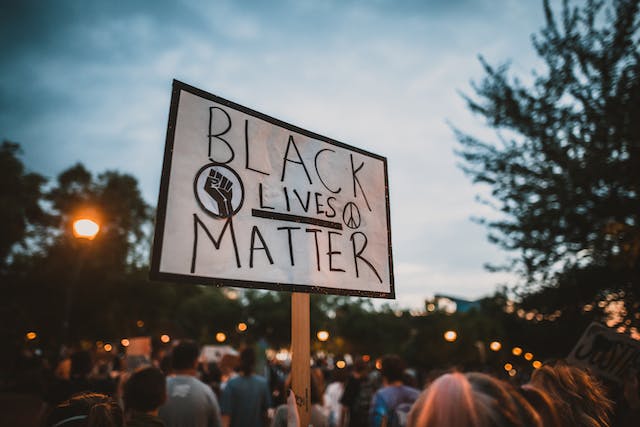
How many people do you need for a revolution? You need 3.5% of a population to start a revolution.
There have been countless revolutions throughout human history. The ones that probably stick in our minds (depending on where we are from) are the French Revolution from 1789, the American Revolution from 1765, the Chinese Revolution from 1911, and the Russian Revolution from 1917. However, there are countless more. Many of these revolutions were violent, but there were also many more that were nonviolent.
So, how many people do you need for a revolution? It appears the tipping point is 3.5% of any population. This is obviously not an exact number and some revolutions need more and some less, but it is a useful guide. If you have fewer than 3.5% of the population, the revolution could easily just fizzle out. 3.5% is enough people that more start to join and it begins to feed itself. 3.5% is also enough to ensure that some members of the police and the people trying to suppress the revolution will know somebody in the crowd and be less likely to follow their orders.
This 3.5% can be seen in many examples, but the Yellow Revolution in the Philippines in 1986 is a good example. President Marcos became leader of the Philippines in 1965. In 1972, his term was up, so he declared martial law in order to stay in power. He treated the Philippines central bank as his own personal piggy bank, shut down newspapers, and arrested any opposition. People put up with this until the world economy tanked in the mid-1980s. The Philippine economy was pretty badly hit and a lot of people had no work. People still didn’t overthrow Marcos. Then, in 1963, he (allegedly) had the leader of the opposition, Benigno Aquino Jr assassinated, and people started to rise up, but not enough of them. Marcos realized he was in trouble and called a snap election, which he then blatantly stole. The Catholic Church and many other institutions condemned his actions. On February 16th, 1986, Corazon Aquino, whose husband had just been assassinated, held a rally in a central park, asking people to begin a campaign of civil disobedience and 2 million people turned up. The population of the Philippines in 1986 was 56,109,838 people and 3.5% of that is 1.96 million people. The Yellow Revolution took a while, but it was ultimately successful, and President Marcos fled. He was, for unknown reasons, allowed to shelter in Hawaii with the billions of dollars he had stolen from the Philippines.
You need 3.5% of a population to start a revolution because that is the number where people are willing to join in. However, as an interesting fact, nonviolent revolutions are far more likely to attract supporters and they are far more likely to work than violent revolutions. A professor at Harvard University, Erica Chenoweth, looked at all of the revolutions over the last 100 years from 1900 to 2006. She found data on 323 violent and nonviolent campaigns. It would be easy to assume that the violent campaigns would be more successful than the nonviolent ones because the governments the people were revolting against were almost always created through violence. It turns out that violence is not the best way to deal with violence when it comes to a revolution.
Over that period, nonviolent revolutions were twice as likely to succeed as violent revolutions. 53% of the nonviolent revolutions were completely successful and only 26% of the violent revolutions were successful. And, on the flip side, nonviolent revolutions only completely failed 20% of the time, while violent revolutions failed 60% of the time. That seems surprising until you stop and think about it. If a revolution needs 3.5% of a population to join it to succeed, a nonviolent revolution is far more likely to get that number. People are not trained to fight, and it is not easy for the majority of people to go out and join a violent protest. It is far easier for people to join a nonviolent protest and it can attract all levels and ages in society. Violent revolutions also need to sustain the level of anger that caused people to fight. Nonviolent revolutions don’t need such a level of anger. In the Philippine revolution, there was the feel of a street party at times. Nonviolent revolutions seem far more legitimate than violent revolutions. If regular people are rising up to protest, there must be a good reason. If an army is fighting, it just feels like more of the same. And, lastly, it is far more difficult for a corrupt regime to deal with a nonviolent revolution. They can shoot violent protestors or release the army on them with some justification. They cannot do the same with unarmed protestors and shooting them will bring the world’s condemnation. And this is what I learned today.
Photo by Kelly : https://www.pexels.com/photo/people-on-street-during-anti-racism-demonstrations-in-evening-4570690/
Sources
https://en.wikipedia.org/wiki/Ferdinand_Marcos
https://en.wikipedia.org/wiki/People_Power_Revolution
https://www.macrotrends.net/countries/PHL/philippines/population
https://www.belfercenter.org/sites/default/files/legacy/files/IS3301_pp007-044_Stephan_Chenoweth.pdf
https://www.bbc.com/future/article/20190513-it-only-takes-35-of-people-to-change-the-world
https://www.thealternative.org.uk/dailyalternative/the-three-point-five-percent-rule
https://www.linkedin.com/pulse/35-rule-greenr-technologies/
